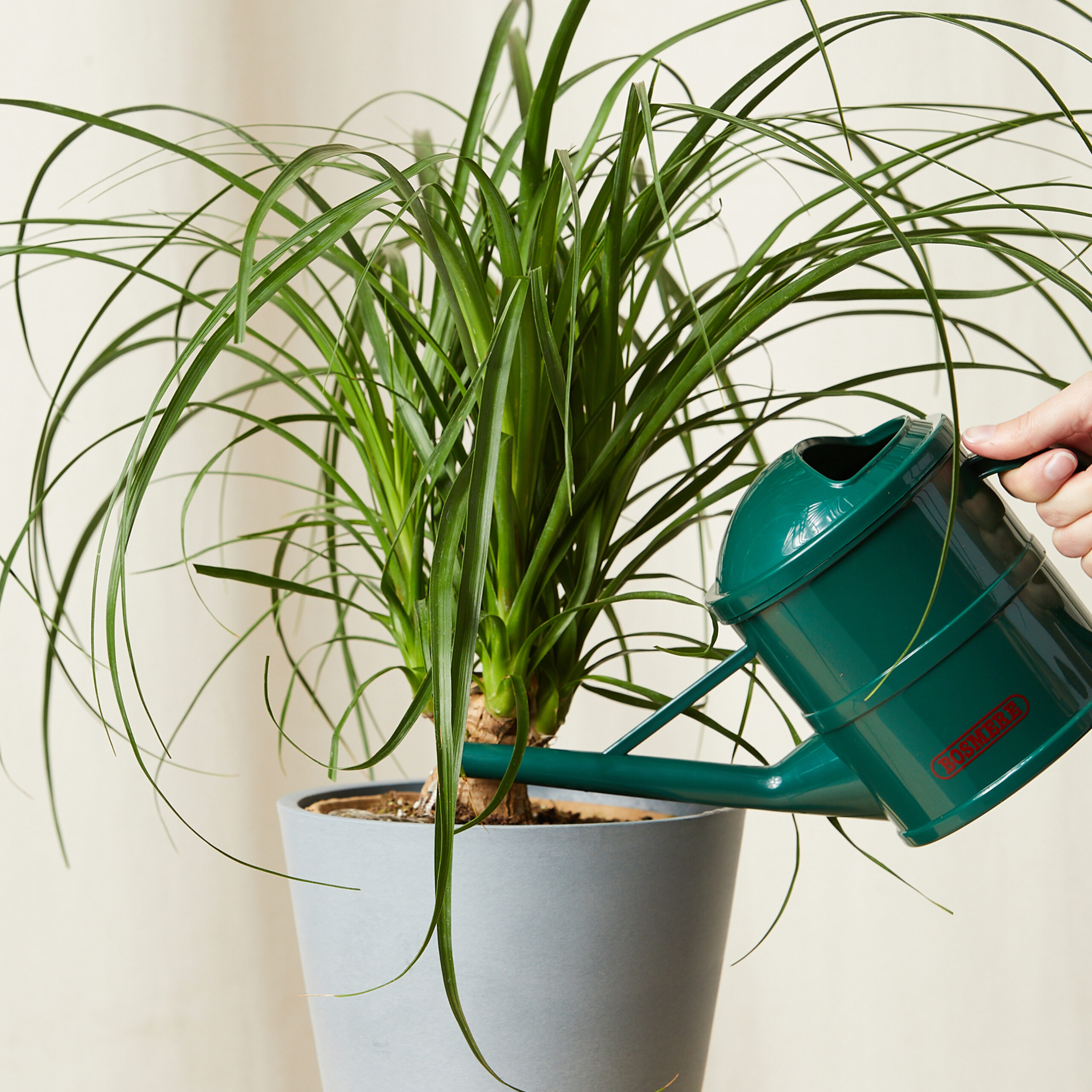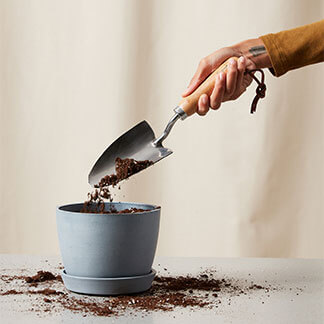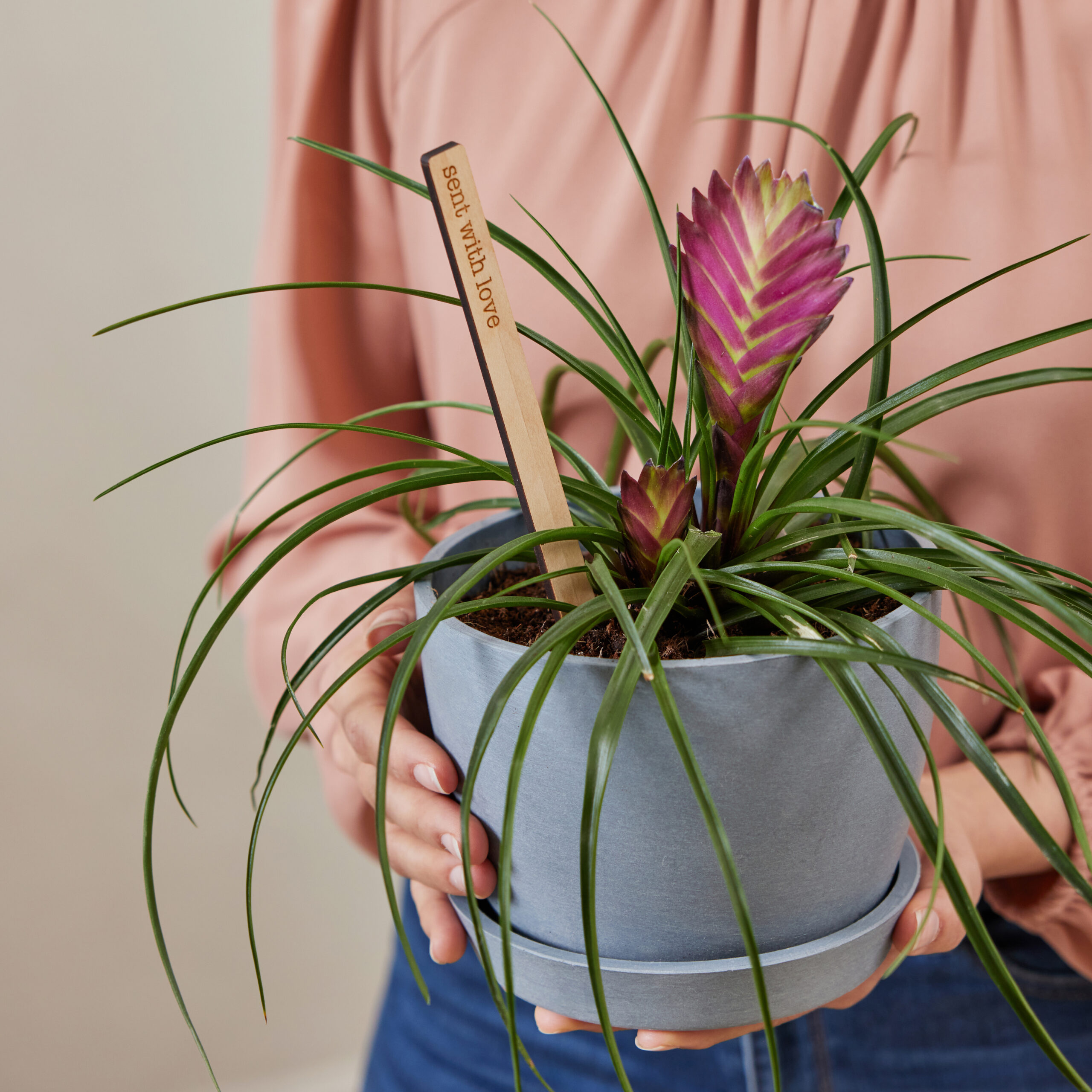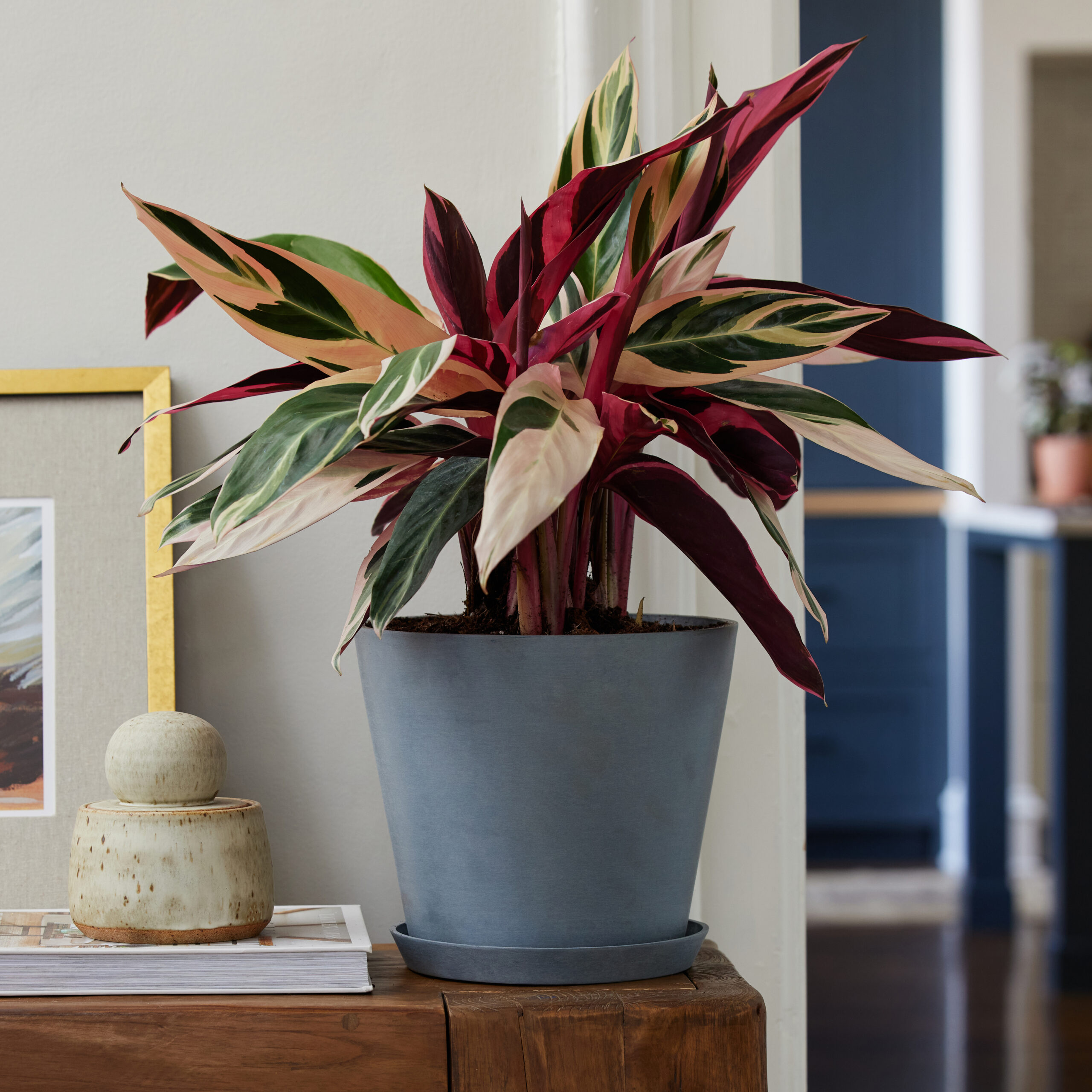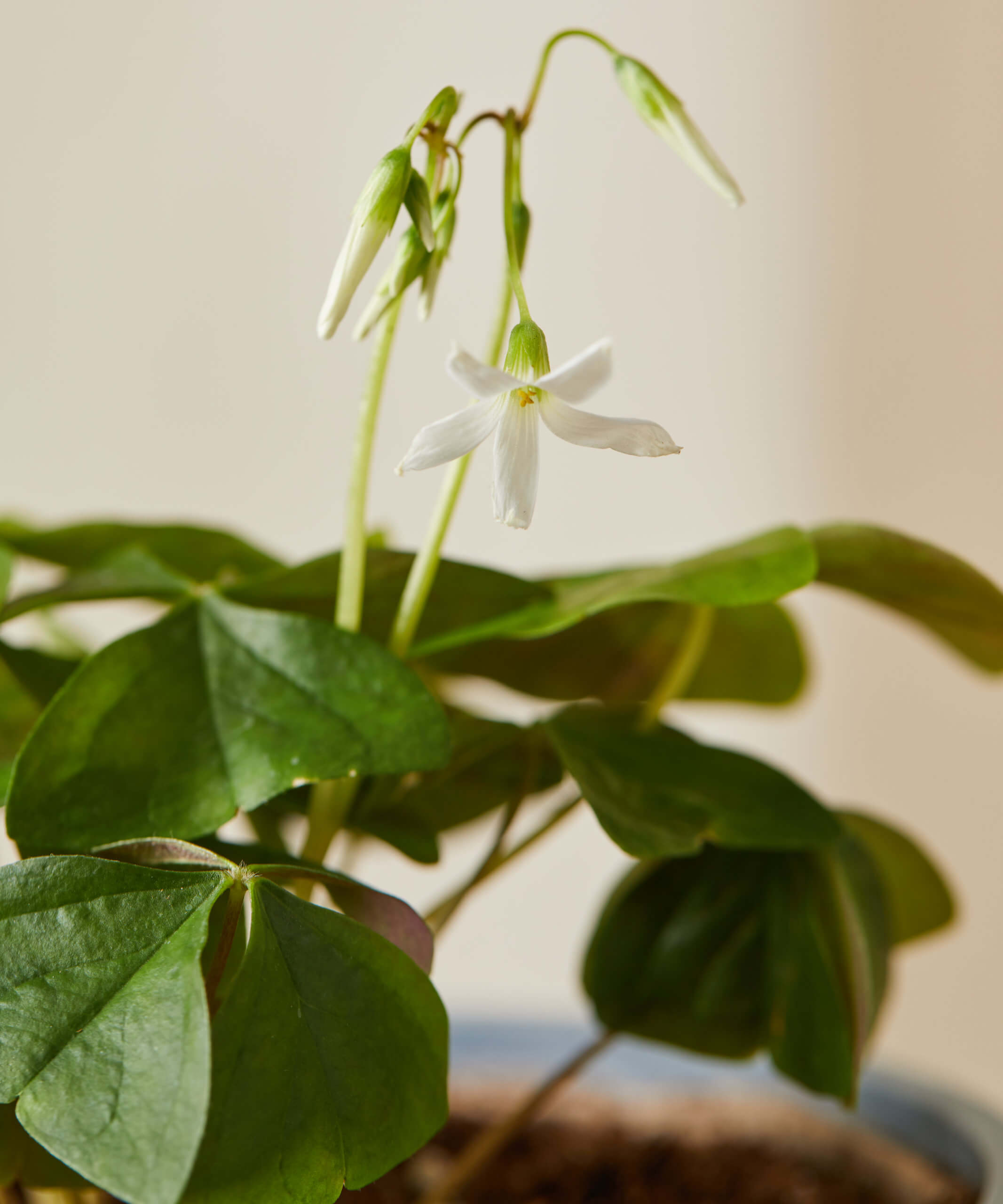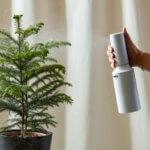Pests
Weakened or stressed plants become more susceptible to insect infestations. Sap-sucking bugs like spider mites can drain your plant of moisture. This problem quickly manifests itself as spots of color loss. Spider mites and thrips occur frequently in indoor conditions. If not killed early on, these small pests proliferate and move all along the plant, hiding in nooks and crannies. The piercing mouths of the insects exhaust your plant and accelerate the discoloring, especially if your plant is already unhealthy from other environmental issues.
If pests are suspected, quarantine the plant and give it a shower to knock off the majority of the pests. Prune off any heavily damaged leaves. Treat the plant with neem oil or insecticidal soap until the issue is clear. This might take several treatments. Always follow the directions of the label.
Light
Oxalis prefers indirect to bright light while indoors, but a sudden introduction to bright light can cause the foliage to burn. If moving to a sunnier spot, acclimate the plant over a few weeks.
Powdery Mildew
Powdery mildew can occur on your plant if it’s sitting in an area of low air circulation with cool temperatures and high humidity. You can identify mildew by the small white circular spots that occur on the broadest parts of the plant. It will start on the leaves, and in more advanced stages will become fluffy strings that spread across the plant. To treat, you can spray the plant with a mix of 1 tablespoon baking soda, ½ teaspoon liquid soap, and 1 gallon of water or use a commercial fungicide. Always follow the direction on the label.


